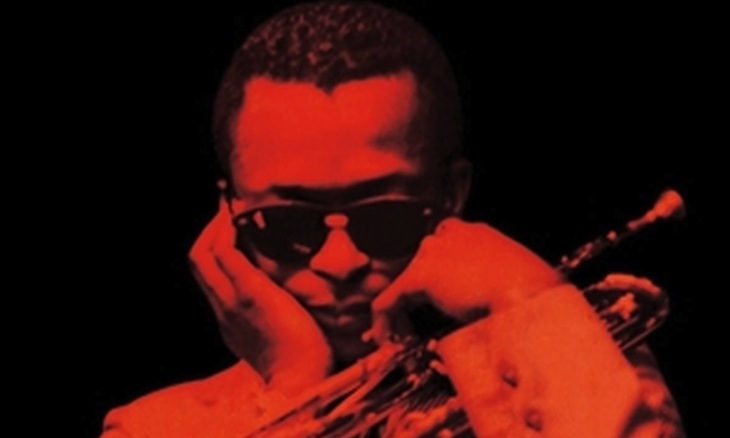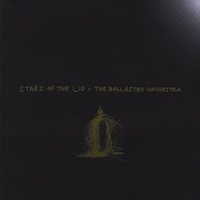10 Essential Late Night Albums

There’s no wrong time to listen to music you enjoy—whenever a certain mood strikes you, that’s always going to be the best time to turn it on. That being said, there’s a certain subset of music that sounds best when the sun’s down, and the rest of the world is either sleeping or probably pretty hammered. Something about the extra daylight hours we just adopted this week made us drawn to the albums we put on when it’s dark out and it’s probably time for last call. Late night music isn’t a genre, but there’s definitely a feeling—there’s something slightly darker about it, a little bit ethereal even. And it’s almost never music that you crank up. These are albums for setting a mood, and getting comfortable with it until it’s time to start a new day. Settle in with us, as we give you our list of essential late night albums.
 Miles Davis – Round About Midnight
Miles Davis – Round About Midnight
(1957; Columbia)
It feels appropriate that our foray into the late night hours begins here. Midnight—’round about there anyhow—is more or less where late night begins, technically the start of a new day but by no means the end of the evening. Miles Davis’ 1957 Columbia Records debut captures that feeling magnificently (as does many of his post-bop records, including the immortal Kind of Blue). The title-ish track, Davis’ take on Thelonious Monk’s “Round Midnight,” is a cool and slow-moving noirscape that evokes its own kind of low-lit imagery. It’s where late night becomes comfortable, before the exhaustion sets in and last call sends the final revelers back to their beds. ‘Round About Midnight is that sweet spot—not an all-night rager or a tortured insomnia, but a bourbon neat in a corner booth, when everyone’s still feeling fine. – Jeff Terich
 Luna – Bewitched
Luna – Bewitched
(1994; Elektra)
I have no earthly idea why my interest in Luna’s first big single, “Anesthesia,” led me not to the source (the band’s 1992 debut Lunapark) but to this subsequent album. Timing? Retro-cool cover art? Did I hear a cut from it somewhere? It sure wasn’t any realization of its pedigree; at the time I wasn’t quite learned enough to recognize Dean Wareham from Galaxie 500, nor pick out the LP’s sonic cues from the likes of Nick Drake and The Velvet Underground. Ah well, I’ll may not remember the impetus but I’ll never forget this music. Bewitched feels like a quiet indie take on dusty country rock—sleepy left-of-center honky-tonk for long nights wrapped up with long roads or long legs. From the atmospheric “Sleeping Pill” to road-trippers like “California (All the Way)” to imperfect love songs “This Time Around” and “Tiger Lily,” this was a go-to album for my romantic mixtapes and bedroom soundtracks through college and beyond. It remains crystalline and unimpeachable. – Adam Blyweiss
 Portishead – Dummy
Portishead – Dummy
(1994; Go! Beat)
Sexy, silky, mysterious, and just a little dangerous, Portishead’s debut was and remains a record best fit for hours of darkness. With an eclectic mix of live, electronic and techniques, Geoff Barrow, Beth Gibbons and Adrian Utley crafted a sly sound that—even more so than other trip-hop acts—resembled a sort of gritty, futuristic lounge music. A track like “Sour Times” sways as much as it swaggers, confusing the listener’s senses in the most subtle of ways. The effect is outright intoxicating. Whether you’re grooving along with a sweetie, enjoying a night in, or furiously working away at a late-night deadline, Dummy is sure to get you in the perfect mood. – AT Bossenger
 Stars of the Lid – The Ballasted Orchestra
Stars of the Lid – The Ballasted Orchestra
(1997; Kranky)
Stars of the Lid’s The Ballasted Orchestra features a track titled “Fucked Up (3:57 a.m.)”. That’s maybe more early morning than late night. But there’s no getting around the fact that track, let alone any of the droning excursions on the Texas band’s third album, sounds best in the wee hours, when silence becomes overwhelming and mundane surroundings can turn instantly surreal. The Ballasted Orchestra is a beautiful record, haunting in its drawn out ambient textures, but ultimately unsettling as well. It’s as soothing as it is eerie, so it’s probably not too surprising two of the tracks on the album feature variations of the title “Music for Twin Peaks Episode #30,” and though they’re abstract in their interpretation, the David Lynch connection is palpable. This is music for communicating with apparitions, walking through woods late at night beneath the lullabies of owls. The drones are not what they seem. – Jeff Terich
 Yo La Tengo – And then nothing turned itself inside out
Yo La Tengo – And then nothing turned itself inside out
(2000; Matador)
Yo La Tengo’s recorded a lot of music in their 30-plus-year career. Some of it’s quiet, some of it’s noisy, but precious little of it feels as intimate as their 2000 set of dirges, lullabies and ballads, And then nothing turned itself inside out. A lush successor to Galaxie 500 and the Velvet Underground, and a precursor to the like-minded drone balladry of Beach House, And then nothing… removes Ira Kaplan’s squalls of distortion (save for the sole rocker, “Cherry Chapstick”) and finds the melodies coated in a warm, whirring sheen of organs and gentle guitar licks. It’s not a loud record, but it’s by no means soft, the strange sound experiments of “Everyday” interrupting an otherwise soothing drone, the discordant stabs of piano juxtaposed against a gentle machine-pop plod on “Saturday,” and “Let’s Save Tony Orlando’s House” carrying an unexpectedly upbeat groove. There’s so much rich detail in these seemingly bare songs that it’s really only appropriate for the afterparty, when all is calm and each complex piece of the intricate puzzle can come into focus. – Jeff Terich
 Explosions in the Sky – Those Who Tell The Truth Shall Die, Those Who Tell The Truth Shall Live Forever
Explosions in the Sky – Those Who Tell The Truth Shall Die, Those Who Tell The Truth Shall Live Forever
(2001; Temporary Residence)
There’s a certain run of mostly-instrumental post-rock in the late ‘90s and early ‘00s—records from the likes of Mogwai, Tortoise and Explosions in the Sky—that will always hold a place in my mind as the perfect music for all-nighters. Now, I don’t mean all-nighters in the lights out, rage-the-evening away sense; I’m talking about the ‘grab a gallon of coffee and let’s chip away at some work’ interpretation of the phrase. And while any EITS record could likely earn a spot on this list, I’m inclined to pick their sophomore release for its added mystery and slightly larger range. It’s a record that shows a band still crafting their sound in exciting ways, pairing gorgeous, three-guitar melodies with explosive, driving rhythms. The record also gained a mysterious place in history because of its physical release one week before the events of 9/11: The album’s cover showed an airplane traveling among the clouds and the liner notes included the phrase “The Plane Will Crash Tomorrow.” I’m not the sort who thinks an instrumental band from Texas necessarily controls the fate of the universe but, still, there’s plenty there to contemplate during the record’s 50-minute run. – AT Bossenger
 Bohren & Der Club of Gore – Black Earth
Bohren & Der Club of Gore – Black Earth
(2002; Wonder)
Tossing and turning into the recesses of the night, in a haze of sleep-deprivation and whiskey (the latter consumed in a half-hearted attempt to cure the former, naturally), I retire to the confines of my basement. Somehow, it’s a place where life seems to move more slowly, and the only noise I hear is that which I create inside my own head. Am I insane? Does it matter? It evokes a feeling within me—loss, regret—but makes no effort to contextualize these depths of sorrow. On the surface, there is some movement to understand, to grasp the darkness of man’s soul. But it’s lost in the ether; it’s tainted by disorder. In this context, the noir-jazz atmosphere of Black Earth is simply entrancing. It’s the last sip of scotch in the candlelight, as the shadows—or the beasts that lurk behind them—slowly poison our souls with promises of vice. We can’t block every single image from our head, and sometimes, it’s not even worth trying. – Ben Braunstein
 Flying Lotus – Los Angeles
Flying Lotus – Los Angeles
(2008; Warp)
Flying Lotus once claimed that Los Angeles was science fiction soundtrack to a film that doesn’t exist. Its influence comes directly from the surrounding environment where it was produced and contains things to love and things to hate about the country’s second most populous city. While the record certainly achieves its goal for being the best experimental film never made, this is also the album that opened the gates to the rich tapestry of the LA beat renaissance co-opted by some exceptional talent and tons of lackluster copycats. Los Angeles picks up where Donuts left off. It’s one of those rare records that immediately detaches from other electronic works serving as the true foundation for FlyLo: The cracks, hisses, and endless loops meshed with tiny samples, 16-bit video game bleeps all tucked in beneath layers of sound. This is not just any album; It’s the midnight movie of the week that Cronenberg, Kubrick and Jodorowsky are all watching too – Giovanni Martinez
 The Caretaker – An Empty Bliss Beyond This World
The Caretaker – An Empty Bliss Beyond This World
(2011; History Always Favours the Winner)
British producer James Leyland Kirby takes you into the memory of an Alzheimer’s patient using crackly samples from music you might expect to find in your great-grandmother’s collection of 78s. Subtle and comfortably uncomfortable, the album title says it all. At times there are loops that seem to go on forever, but in their nostalgic warmth go unnoticed. Other times, like waking up from a dream right before the kiss, the song abruptly stops mid-thought. An Empty Bliss is an essential album for late-night deep thoughts and blank stares. – Phil Scott
 Chelsea Wolfe – Pain is Beauty
Chelsea Wolfe – Pain is Beauty
(2013; Sargent House)
Chelsea Wolfe’s music has always embraced a beautiful darkness and an understated tone, but perhaps nothing she’s crafted is more fit for a night alone than Pain is Beauty. From the moment opener “Feral Love” really picks up (around the two-minute mark) onward, the listener feels as if they’re floating. But this isn’t a heavenly, angelic sort of flight. You are immersed in the ether, slowly crawling through a series of life’s most beautiful and tragic moments. It’s a record for thinking to. It’s a record for writing to. For crying. For screaming. For listening, closely. – AT Bossenger


Thank you, guys, for making this list. You guys did a solid job.
thanks!